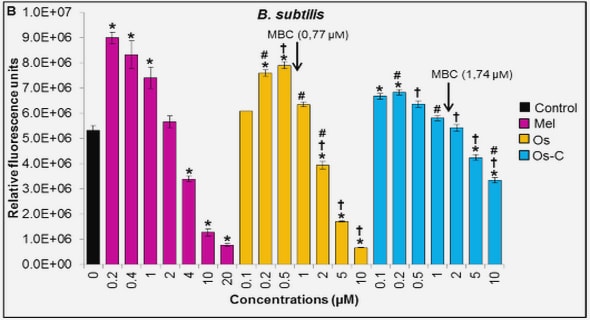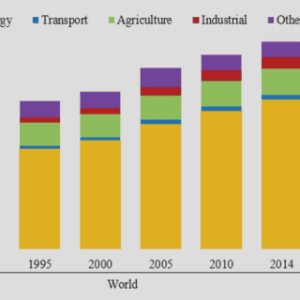(Downloads - 0)
For more info about our services contact : help@bestpfe.com
Table of contents
Introduction
Part 1: Essays in French Demographic and Economic History
1 Spatial Distribution of Population by Age in France, 1851–2014 21
Abstract
1.1 Introduction
1.2 Data and Methods
1.2.1 Inequality Indicators
1.2.2 Aggregation of Data Sources
1.2.3 Unification of the Geographical Framework
1.3 Results
1.3.1 Evolutions of Departmental Densities of Population since 1851
1.3.2 The Three Phases in the Evolution of Spatial Distribution of Population
1.3.3 The Uneven Spatial Distribution of Population According to Age
1.3.4 Differences in Departmental Structures of Population by Age
1.4 Conclusion
1.5 Appendices
1.5.1 Map of the 90 French Départements Used to Calculate Inequalities
1.5.2 Spatial Distribution of Men Aged 30 to 39 and 65 to 79: Inequality indices
1.5.3 Evolution of the Distribution of Population by Age Group : Decomposition Method
1.5.4 Departmental Contributions in KLDNat Evolution
1.5.5 Distorsion indices in 1856, 1896, 1946 and 2011
2 Spatial Inequalities in French Life Expectancy, 1806–2014
Abstract
2.1 Introduction
2.2 Data and Methods
2.2.1 Data Sources
2.2.2 Geographical Scope
2.2.3 Indicators of Inequality
2.2.4 Convergence Indicators
2.3 Results
2.3.1 The Three Phases in Reduction of Spatial Inequalities of Life Expectancy
2.3.2 Role of Infant Mortality in Shrinking Spatial Inequalities
2.3.3 Major Changes in the Geography of French Longevity
2.4 Conclusion
2.5 Appendices
3 Spatial Inequalities of Income and Welfare in France, 1922–2014
Abstract
3.1 Introduction
3.2 Data and Methods
3.2.1 Existing Databases Used
3.2.2 Income per Adult between 1922 and 2014: Estimation Method
3.2.3 Income and “Mortality Adjusted Income”
3.2.4 Analysis of Spatial Income Inequalities
3.3 Results
3.3.1 The Three Phases in the Decrease of Spatial Inequalities of Income per Adult
3.3.2 The Virtuous Convergence of Income per Adult during the Second Half of the 20th Century
3.3.3 The Evolution of Spatial Inequalities of “Mortality Adjusted Income” per Adult
3.3.4 Changes in the Geography of Development in France
3.4 Conclusion
3.5 Appendices
3.5.1 Publications Used to Compute Departmental Incomes
3.5.2 Map of the 90 French Départements in 1967
3.5.3 Methodology Used to Compute “Mortality Adjusted Incomes”
3.5.4 Spatial Inequalities of Income Densities
3.5.5 Shrinking Regions: A Classification
3.5.6 Departmental Classification According to Relative Income per Adult
4 Beyond the Exodus of May-June 1940: Internal Flows of Refugees in France
Abstract
4.1 Introduction
4.2 Data and Methods
4.2.1 Departmental data
4.2.2 Framework of the Study
4.2.3 Estimation of Annual Departmental Populations and Internal Migrations
4.3 Results
4.3.1 The Global Consequences of the War
4.3.2 Annual Monitoring of Internal Population Migrations
4.4 Conclusion
4.5 Appendices
4.5.1 Map of the 86 French Départements
4.5.2 Cause of Death Classification
4.5.3 Evolutions of Departmental Populations by Component, 1939–1946
4.5.4 Yearly Variations of Population due to Migratory Movement
Part II: Data and Methods 125
5 Computations of French Lifetables by Département, 1901–2014
Abstract
5.1 Introduction
5.2 Sources
5.2.1 Deaths
5.2.2 Births
5.2.3 Censuses
5.3 Methods
5.3.1 HMD Protocol Methods
5.3.1.1 Raw Data Adjustments
5.3.1.2 Splitting Deaths into Lexis Triangles
5.3.1.3 Computations of Populations by Age at 1st January of each Year
5.3.1.4 Adjustment of Computed Mortality Rates
5.3.2 Specific Departmental Methods
5.3.2.1 Specific Methods Due to Data Quality
5.3.2.2 Specific Methods Due to the Two World Wars
5.3.2.3 Specific Methods Due to Territorial Changes
5.3.2.4 Specific Methods Due to Missing Data
5.3.3 Reliability of the Data and Comparison with Other Studies
5.4 Available Results and Discussion
5.4.1 Available Results
5.4.2 Discussion
5.4.2.1 Census Reliability
5.4.2.2 Interdepartmental Migrations
5.4.2.3 Domiciliation of Deaths during the Two World Wars
5.4.2.4 Small Département Figures
5.5 Conclusion
5.6 Appendices
5.6.1 Computations of Population on 1st January
5.6.1.1 Intercensal Survival
5.6.1.2 Precensal Survival Method
5.6.1.3 Extinct Cohorts Method
5.6.1.4 Survivor Ratio Method
5.6.2 Set of Different Lifetables
5.6.3 Census Adjustments
5.6.3.1 Distribution of Deaths of Unknown Age in 1901 Census
5.6.3.2 Addition of Age Group for Pre-1946 Censuses
5.6.3.3 Adjustment of Censuses by Cubic Splines
5.6.4 Estimates of Military Deaths during the Two World Wars
5.6.5 Estimates of Deportees
5.6.5.1 Born-abroad Deportees
5.6.5.2 French Deportees
5.6.6 Missing Data During the Two World Wars
5.6.6.1 Births and stillbirths
5.6.6.2 Deaths
5.6.7 Reorganization of Ile-de-France in 1968
5.6.8 Computations of 1st January Populations by Class of Départements
5.6.9 Sources of Raw Data
6 Computations of French Income Distributions by Département, 1960–2014
Abstract
6.1 Introduction
6.2 Data and Spatial Framework
6.2.1 Fiscal Data at the Departmental Level
6.2.2 Departmental Demographic Data
6.2.3 National Data
6.2.4 Spatial Framework
6.3 Methods
6.3.1 Period 1986–2014
6.3.1.1 Raw Fiscal Statistics Available
6.3.1.2 Taxable Income and Fiscal Income Distributions
6.3.2 Period 1960–1969
6.3.2.1 Computations of Total Tax Units by Département
6.3.2.2 Computations of Fiscal Income by Département
6.3.2.3 Computations of Fiscal Income Distributions for all Tax Units
6.3.3 Template of Fiscal Income Distributions by Département
6.4 Results
6.4.1 Fiscal Income per Adult
6.4.2 Intra-departemental Inequalities
6.4.3 Spatial Distribution of Tax Units Belonging to each Fractile
6.5 Conclusion
6.6 Appendices
6.6.1 Computations of Departmental Fiscal Incomes Using Regional Accounting
6.6.2 Supplementary Materials
Conclusion
Bibliography




